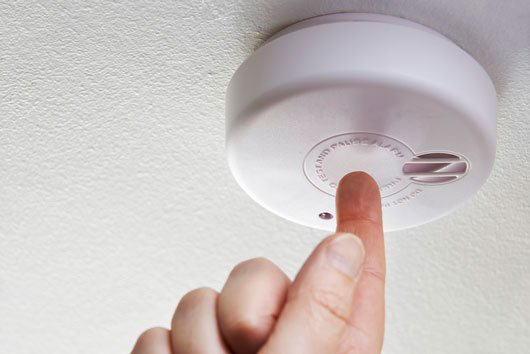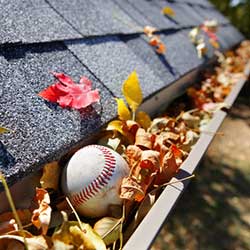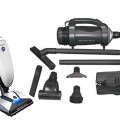
With the first day of summer fast approaching, thoughts of sunshine and spending time outdoors can be an enticing, especially if you live in the north. As the weather continues to improve and the days grow longer, it’s easy to put off home improvement projects until later. But completing these chores before the summer heat sets in will not only be more comfortable for you, but can maximize the lifespan of both the exterior and interior of your home. To get things started, lets look at some of summer maintenance tasks you should consider for your home, many of which you can do on your own.
TEST YOUR SMOKE ALARMS
Maybe you already do this on a regular basis—or maybe your cooking does it for you. But your smoke alarms serve as a protective tool and should always function properly. For minimum coverage, you should install one smoke detector on every floor of your home and one in each bedroom. They should be inspected once a month.
There are two types of smoke alarms: battery-powered and hard-wired. Battery powered smoke alarms should undergo battery replacement at least twice a year and monthly testing is most critical for these units. Hard-wired detectors are powered by your home’s electricity and typically have backup batteries in case of a power outage. Regardless of type, you should inspect them regularly.
CLEAN YOUR DRYER VENT
It’s common knowledge that dryer vents, over time, build up lint. This lint obstructs airflow and becomes a major fire hazard. In fact, lint buildup causes thousands of residential fires each year.
Cleaning your dryer vent and hose can be a laborious task and hiring a licensed professional can make your job much easier. If you choose to work alone, you should unplug your dryer, move the system away from the wall and properly detach the hose. You should also remove the vent outside your home. Once disassembled, use a shop or house vacuum to reach inside the back of the dryer and vent tubing to remove the lint. After vacuuming out any lint residue, you should hook your dryer back up and run it on “air fluff” for 10 minutes.
CHECK YOUR FIRE EXTINGUISHER
The fire extinguisher is an essential safety item that most homeowners overlook. Most people don’t think twice about living without a fire extinguisher until they find themselves in a rare situation of actually needing one. If you don’t own a fire extinguisher, purchase one.
Fire extinguisher inspections are relatively simple and should be done monthly. Here are a few inspection checklist items to consider.
-
Assess accessibility
-
Check the tamper seal
-
Inspect the pull pin
-
Check the pressure
-
Look for physical damage
-
Remove any debris from the nozzle
-
Shake it (dry chemical extinguishers only)
-
Track professional inspections

CLEAN YOUR GUTTERS
Leaves, dirt and sediment build up in gutters, clogging downpipes and blocking water flow. Without drainage outlets, excess water will seep into your roof and wreak havoc. If left unattended for long periods of time, unregulated water flow can result in structural damage such as cracked walls and floors.
Because gutter cleaning requires a ladder, you should consider hiring a professional. This way they can inspect your entire gutter system and repair any damages. However, if you choose to clean your gutter system without professional assistance, make sure you use gloves, a dust mask, safety goggles, a ladder and a garden trowel for scooping out old leaves and debris.
Read Related: How to Clean Your House in 20 Minutes
CHANGE YOUR HOME AIR FILTER
During the spring months you may choose to turn off the heat and open the windows for fresh air, but soon it will be hot and you’ll be back to a contained household. Maintaining your home heating, ventilation and air conditioning system (HVAC) is critical for ensuring operational efficiency and lifespan. Filters also help keep dust from building up in your ducts and being blown into other rooms, and they help remove dust, pollen, pet dander, bacteria and spores from your home’s air supply.
Changing filters is a fairly simple process. Check your existing filters for the correct size, turn off the a/c unit, remove the old filter and insert the new filter. Depending on where you live and how much you use your system, you’ll want to change filters every 1-3 months.
INSPECT YOUR SUMP PUMP
It may have a funny sounding name, but your sump pump does its job by keeping water out of your basement. Sump pumps work by expelling residual rain and groundwater to a suitable discharge location. A floating sensor activates the pump when water levels rise above a specific threshold, and protects your home from unwanted water damage.
Sump pumps can be relatively technical and unusual to deal with, but here are a few checklist items to consider:
-
Check the alarm (not all systems have alarms).
-
Inspect for the presence of a check valve. This is usually found on the discharge pipe— make sure it functions.
-
Look for a backup power source. A backup power source, such as a battery, will allow you pump to work during power outages when adverse conditions are likely.
-
Inspect the pit. The sump pump sits in a pit where the water gathers, so make sure the pit is large enough (24 inches deep and 18 inches wide).
-
Check the discharge location. The discharge location needs to be 20 feet away from your home and the homes of other residents.
INSPECT YOUR ROOF
Your roof is the tip of the spear when it comes to enduring the elements—driving rains, sweltering sun rays, high winds and relentless hail. Cosmetic warning signs include cracked caulk or rust spots on flashing, shingles that are buckling, curling, or blistering, and worn areas around chimneys, pipes and skylights. And while you’re cleaning those gutter—a pile of grit in your gutters from asphalt roof shingles indicates decaying shingles. If left unchecked, you may be facing a major and costly roof renovation.
Basic inspections are relatively simple and can help you thwart major damages. You should always practice safety when conducting a preliminary inspection. Beyond a personal inspection, hiring a professional inspector will further offer you peace of mind. They will examine and report on the insulation, draining functionality and overall structure. Never put off roof repairs!
CLEAN OUT YOUR WATER HEATER
You might not realize this, but your water heater isn’t just a ‘set it and forget it’ appliance. Your owner’s manual should include a list of simple maintenance procedures that can greatly extend the lifespan of your heater. Tankless water heaters are increasingly popular and require significantly less upkeep than conventional water heaters. Specifically, conventional systems tend to build up sediment. This sediment greatly reduces efficiency and will eventually leave you taking cold showers.
For cleaning, you first need to determine whether your tank is heated by gas or electricity. Once you figure out the heating mechanism, you need to turn of the water and the heating source. Attach a durable hose to the spigot that empties into a drain, external bin or directly outside and turn the valve counter-clockwise to release the water. To open up water flow, open the pressure release valve at the top of the tank. Once the tank empties, turn the water valve back on to flush the tank with clean, fresh water. Be sure not to turn the power back on to the tank until it’s full of water.
Although performing routine home maintenance is an investment of your valuable time and can be labor intensive, it will undoubtedly save you money in the long run. Staying on top of your list can be difficult but there are many maintenance scheduling tools on the web that can help you stay on track.











